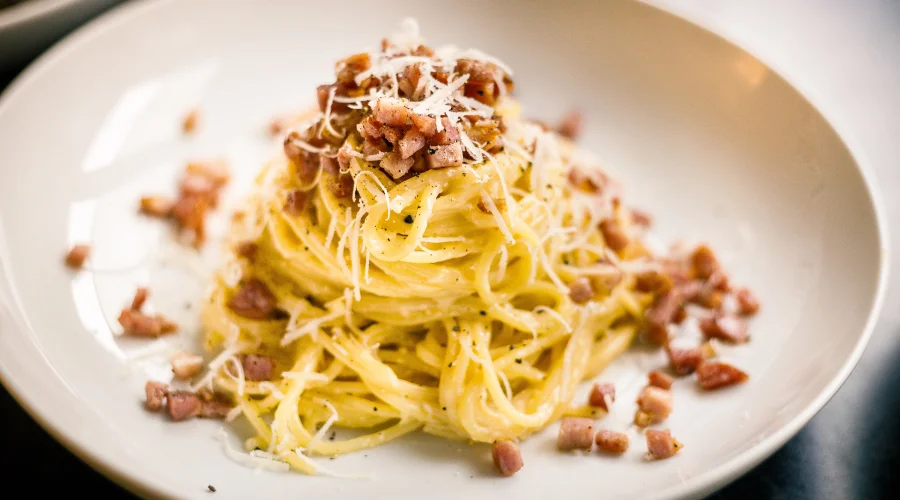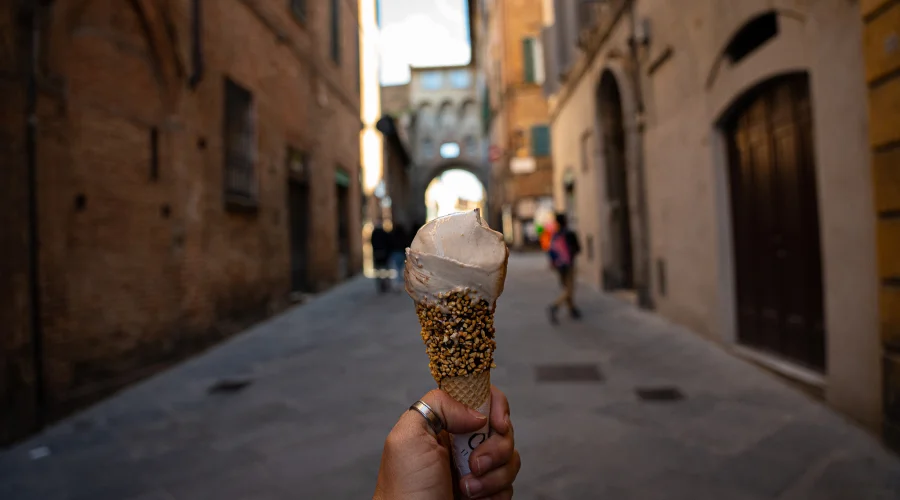The Delicious World of Roman Gastronomy: Flavors and Traditions

The city of Rome is known for many things: its impressive history, rich culture and iconic architecture. However, one of the highlights of Rome is its delicious cuisine. Roman cuisine is a feast for the senses, a fusion of authentic flavors and centuries-old traditions that are kept alive today. In this article, we will explore Rome’s gastronomy in depth, from its most emblematic dishes to its best-kept culinary secrets.
The Basics of Roman Gastronomy
Roman gastronomy is based on simplicity and freshness of ingredients. Although today you can find more sophisticated dishes in the city’s restaurants, the essence of Roman cuisine is found in its homemade, traditional food. Here are some key ingredients and techniques that define Roman gastronomy.
Fresh Local Products: Roman cuisine is based on fresh, seasonal ingredients. Tomatoes, artichokes, eggplants, olives and aromatic herbs are fundamental to most dishes. Romans value the quality of the ingredients over the complexity of the preparation.
Pasta and Homemade Bread: fresh pasta and homemade bread are pillars of Roman gastronomy. Romans are masters at preparing different types of pasta, from classic spaghetti and fettuccine to gnocchi and orecchiette. Rustic bread is an essential accompaniment to almost every meal.
Extra Virgin Olive Oil: extra virgin olive oil is a fundamental part of Roman cuisine and is used in abundance. It is used both for cooking and for dressing salads and other dishes.
Aromatic herbs: the use of fresh aromatic herbs such as rosemary, thyme, oregano and parsley is common in Roman cuisine. These herbs add flavor and aroma to dishes.
Pecorino and Parmesan cheese: Pecorino cheese, made from sheep’s milk, and Parmesan cheese are key ingredients in many Roman dishes. They are used to add flavor and texture to pasta and salads.

Emblematic Dishes of Roman Gastronomy
Spaghetti alla Carbonara: this is one of Rome’s most iconic dishes. Carbonara is prepared with spaghetti, egg, pecorino cheese, guanciale (a type of Italian bacon) and black pepper. The creaminess of the egg and cheese mixes with the saltiness of the guanciale to create an unparalleled flavor.
Cacio e Pepe: is another classic pasta dish from Rome. It is made with spaghetti or bucatini mixed with pecorino cheese, black pepper and a little pasta cooking water. The simplicity of this dish brings out the flavors of the basic ingredients.
Amatriciana: is a sauce based on tomato, guanciale, pecorino cheese and pepper. It is traditionally served with bucatini and is known for its robust and spicy flavor.
Supplì: these fried delicacies are a specialty of Rome. They are rice balls stuffed with mozzarella and sometimes meat ragu. They are crispy on the outside and creamy on the inside.
Carciofi alla Romana: artichokes are a prized ingredient in Roman cuisine. Carciofi alla Romana are prepared with fresh artichokes, garlic, mint, parsley and olive oil. They are tender and full of flavor.
Saltimbocca alla Romana: this dish consists of thin slices of veal wrapped in ham and sautéed in butter and white wine. It is served with a sauce of meat stock and sage leaves.

Gastronomic Delights of Rome
The city offers a wide variety of dining options that will please all ages, from traditional Italian dishes to fast food and more kid-friendly options. Here are some suggestions of places and dishes that are ideal for families in Rome:
Traditional Pizzerias: Pizza is a classic dish that attracts people of all ages. Children tend to enjoy the simpler options, such as Margherita (tomato, mozzarella and basil), while adults can try pizzas with fresh local ingredients at places like Pizzarium, da Baffetto or Dar Poeta.
Gelaterias: Italian gelato is a delicious dessert that everyone will enjoy. Gelaterias in Rome offer a variety of flavors, from chocolate to fresh seasonal fruits. Let the kids choose their favorite flavors and enjoy a cone or a tub of gelato at places like Gelateria del Teatro, Giolitti or Fatamorgana.
Family Trattorias: These are informal restaurants offering homemade Italian dishes. They are ideal for families, as they usually have varied menus that include pasta, meat and fish options. Children can enjoy pasta with simple sauces such as carbonara or bolognese in places like Da Enzo al 29, La Gensola, Trattoria der Pallaro.
Ristorants with Children’s Menus: Some ristorants in Rome offer menus specially designed for children. These menus usually include simpler options and smaller portions at affordable prices. This is a good option if you have picky children or want to control costs at places like Il Corallo, Osteria da Fortunata, Ristorante Abruzzi.
Food Markets: a fun way to experience local cuisine and buy fresh food to take away. Markets often have stalls selling products such as cured meats, cheeses, fresh bread and fruits. You can put together an impromptu picnic with the products you like the most in places like Campo de’ Fiori Market, Mercato Trionfale, Testaccio Market.

Food Markets and Street Food
To experience authentic Roman food, you can’t overlook the food markets and street food.
Campo de’ Fiori market: this open-air market is a perfect place to taste local products such as cheeses, cold cuts, fresh fruits and vegetables. You can also find high quality olive oil and aromatic spices.
Pizza al Taglio: a variety of rectangular pizza sold by weight. You can find it in many bakeries and pizzerias in the city. It is a quick and delicious option for a light lunch.
Supplì on Via di Santa Dorotea: if you are looking for a delicious appetizer, head to Via di Santa Dorotea, where you will find several stores selling freshly made supplì. It’s hard to resist their crunchy taste and creamy filling.
Gelato at Giolitti: for dessert, you can’t miss Italian gelato. Giolitti is one of Rome’s most famous gelato shops, known for its authentic flavors and wide variety of choices.
Roman Culinary Traditions
Dining in Rome is much more than simply satisfying your appetite; it is a cultural experience rooted in tradition. Here are some culinary traditions that are an integral part of life in Rome.
Pasqua Romana: it is an important holiday, and food plays a central role. One of the most traditional Roman Easter dishes is coratella con carciofi, a lamb stew with artichokes.
Traditional Pizzerias: are a popular meeting place for friends and family. The tradition is to share a pizza and spend time together.
The Aperitivo: is an Italian tradition of having a drink and enjoying small portions of food before dinner. Many bars and restaurants in Rome offer aperitifs, and it is a great way to relax at the end of the day.
Gastronomic Festivals: Rome hosts numerous gastronomic festivals throughout the year, celebrating local dishes and products. These events are a perfect opportunity to sample a wide variety of Roman flavors in one place.
Local Beverages
Rome’s most emblematic drink is, of course, wine. Try local wines such as Frascati white or Italian Chianti to accompany your meals. There are several enotecas where you can enjoy a wide selection of Italian wines and often try some local specialties as well. Here are some popular wine bars in Rome:
- Trimani: This is one of the oldest enotecas in Rome and has a wide selection of Italian and international wines. They also offer wine tasting events and classes.
- Enoteca Cavour 313: This enoteca offers a wide selection of Italian wines, including a variety of local wines. They also serve traditional Italian dishes to accompany the wines.
- Vin Allegro: It is known for its cozy atmosphere and excellent selection of Italian wines. They organize wine tastings and special wine and food pairing events.
- Etabli Enoteca Bistrot: Offers an extensive selection of high quality Italian wines, as well as modern and creative Italian dishes that pair perfectly with their wines.
- Enoteca Provincia Romana: This enoteca is dedicated to promoting the wines of the Lazio region, which includes Rome. It offers a variety of local wines from the region, as well as a selection of local cheeses and cured meats to complement the wines.
- You can also enjoy classic Italian cocktails such as Negroni or Aperol Spritz in the local bars.
The Future of Roman Gastronomy
The future of Roman gastronomy is shaping up with a captivating blend of deep-rooted tradition and the incursion of contemporary culinary innovations. With a rich gastronomic history dating back centuries, Roman cuisine has constantly evolved, adapting to changing diner preferences and global trends. As the world moves toward greater environmental awareness and more diverse diets, Rome’s culinary scene is also at a fascinating crossroads.
In the future, Roman gastronomy is expected to focus increasingly on local ingredients and sustainable practices. Chefs and restaurateurs will strive to highlight fresh produce from the Lazio region and promote environmental sustainability through responsible farming and fishing techniques. This trend will reflect the growing global interest in reducing the environmental impact of food production and promoting local agriculture.
Chefs are expected to experiment with combining traditional culinary flavors and techniques with contemporary touches, creating exciting and unique dishes that reflect the city’s cultural diversity. This fusion of culinary influences could lead to a variety of intriguing dining experiences for residents and visitors to the Eternal City.
Restaurants are expected to incorporate advanced technology into their operations, from more sophisticated cooking techniques to more efficient ordering and payment systems. In addition, chefs are likely to use technology to offer innovative dining experiences that combine culinary artistry with interactive technological and multimedia elements.
Despite possible innovations and changes, it is expected that Roman gastronomy will continue to preserve its rich culinary heritage and promote the authenticity of its traditional dishes. The preservation of centuries-old recipes and the promotion of traditional culinary techniques will remain an integral part of Rome’s gastronomic identity, ensuring that visitors and locals will continue to enjoy authentic Roman delicacies for generations to come.

Conclusion
Rome’s gastronomy is a true feast for the senses. From simple but tasty pasta dishes to decadent desserts and quality wines, the Eternal City has much to offer food lovers. Whether you opt to eat at a traditional restaurant, try street food or prepare your own dishes with local ingredients, your culinary experience in Rome will be unforgettable. So, get ready to savor authentic Italy in every bite!









